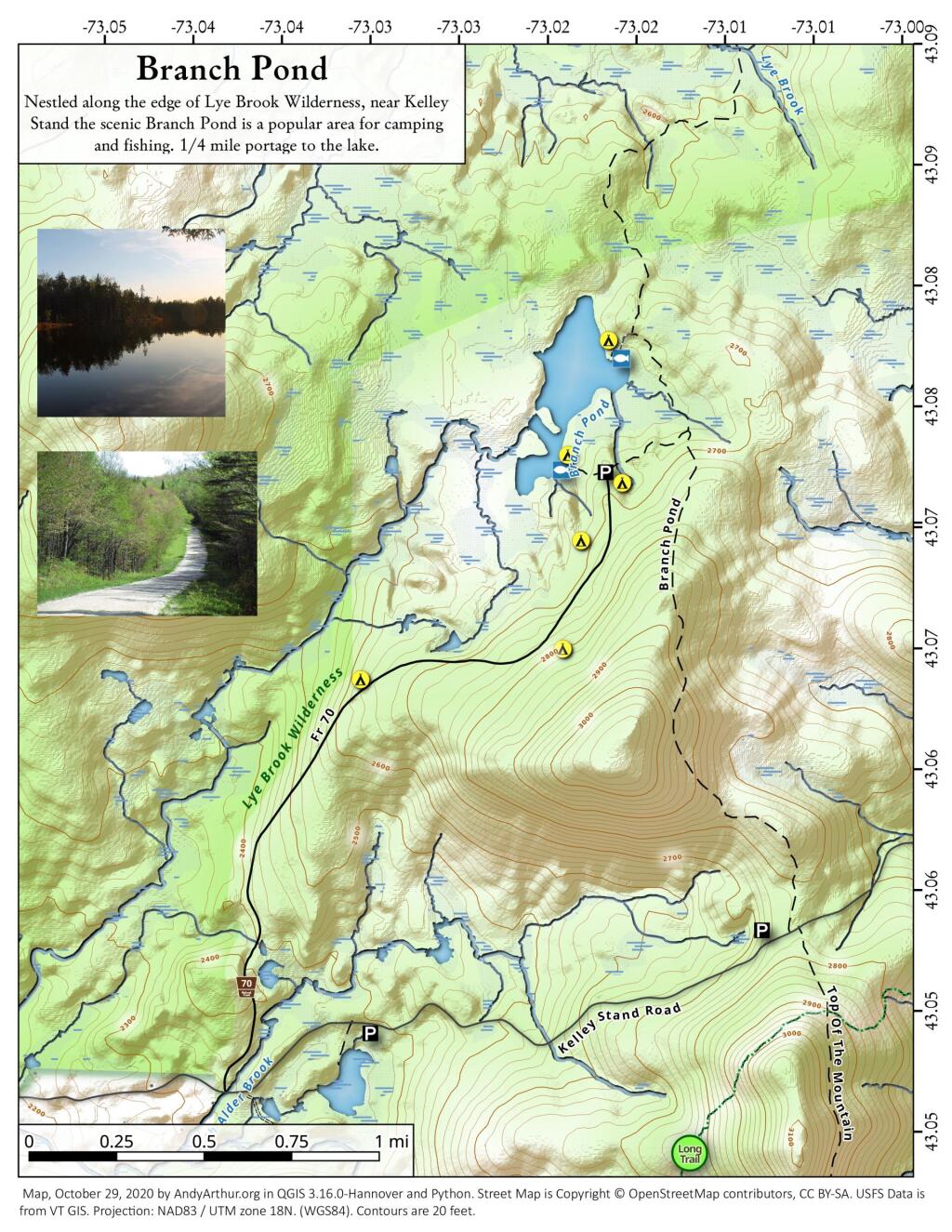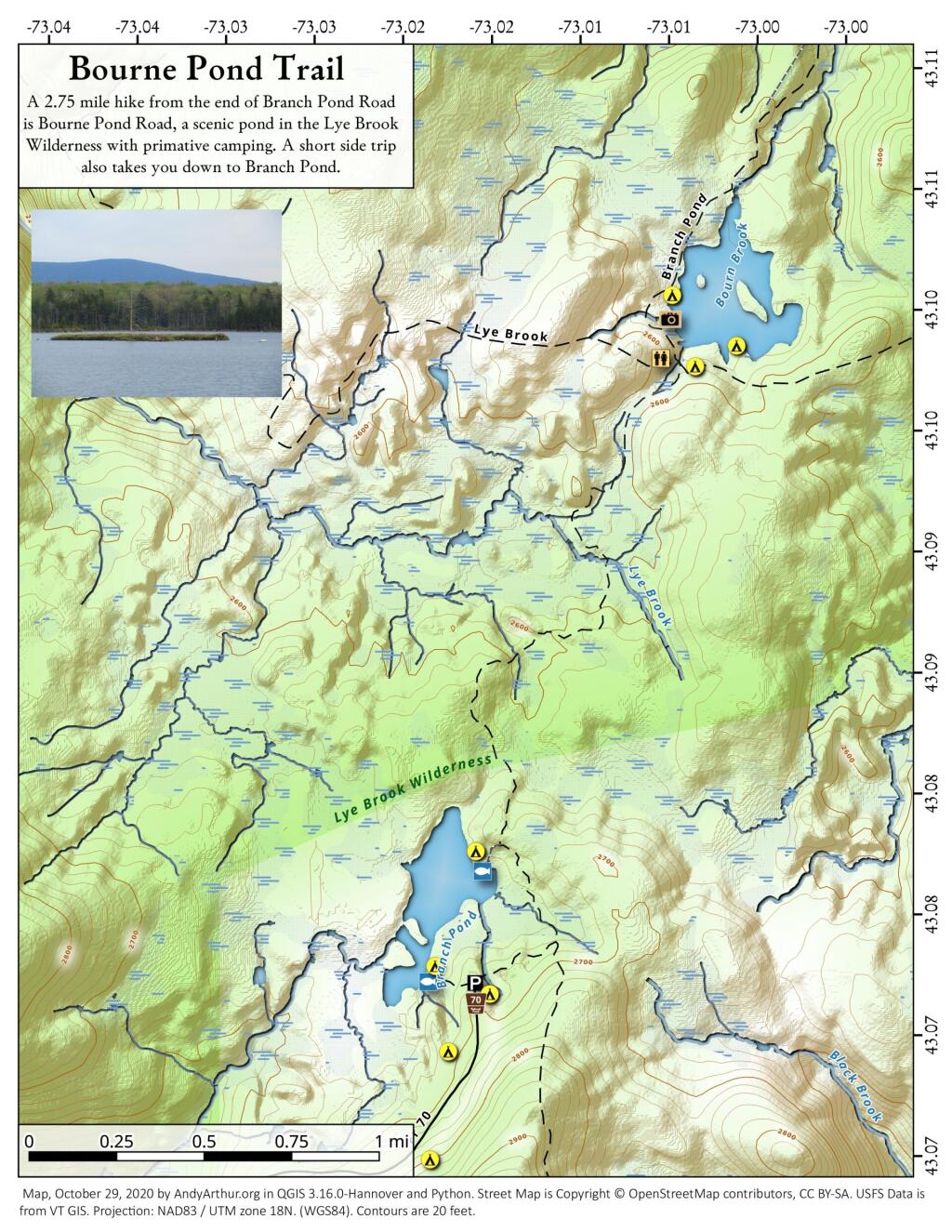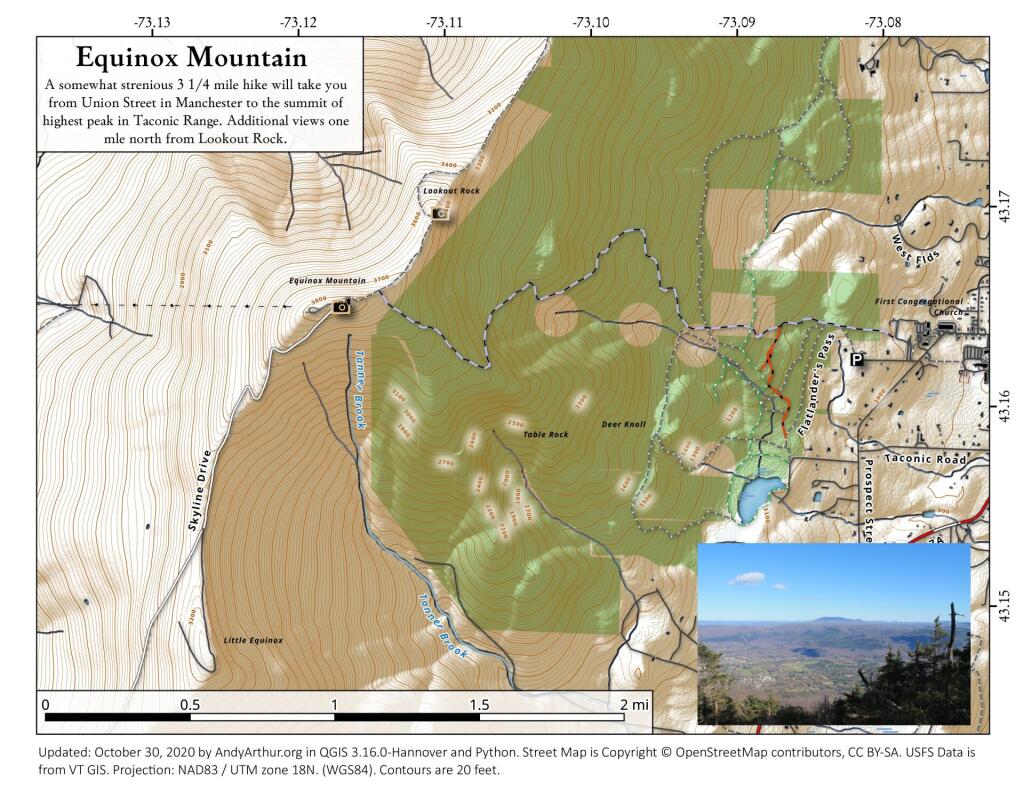Green Mountain National Forest
Bald Mountain in Bennington
Branch Pond
Bourne Pond Trail
Bourne Pond is a 2.75 mile hike from the end of Branch Pond Road, a scenic pond in the Lye Brook Wilderness with primative camping and an outhouse. A short side trip takes you down to Branch Pond.
Equinox Mountain
Harmon Hill
Harmon Hill is a relatively short hike along the Long Trail to an overlook over Bennington, VT.
Camping at Green Mountain National Forest on September 23, 2024
Hiked up Bald Mountain in Bennington, rode around Prospect Mountain Road and hiked some of the trails.
![Untitled [Expires November 6 2024]](https://andyarthur.org//data/photo_017731_large.jpg)
![Untitled [Expires November 6 2024]](https://andyarthur.org//data/photo_017722_large.jpg)


